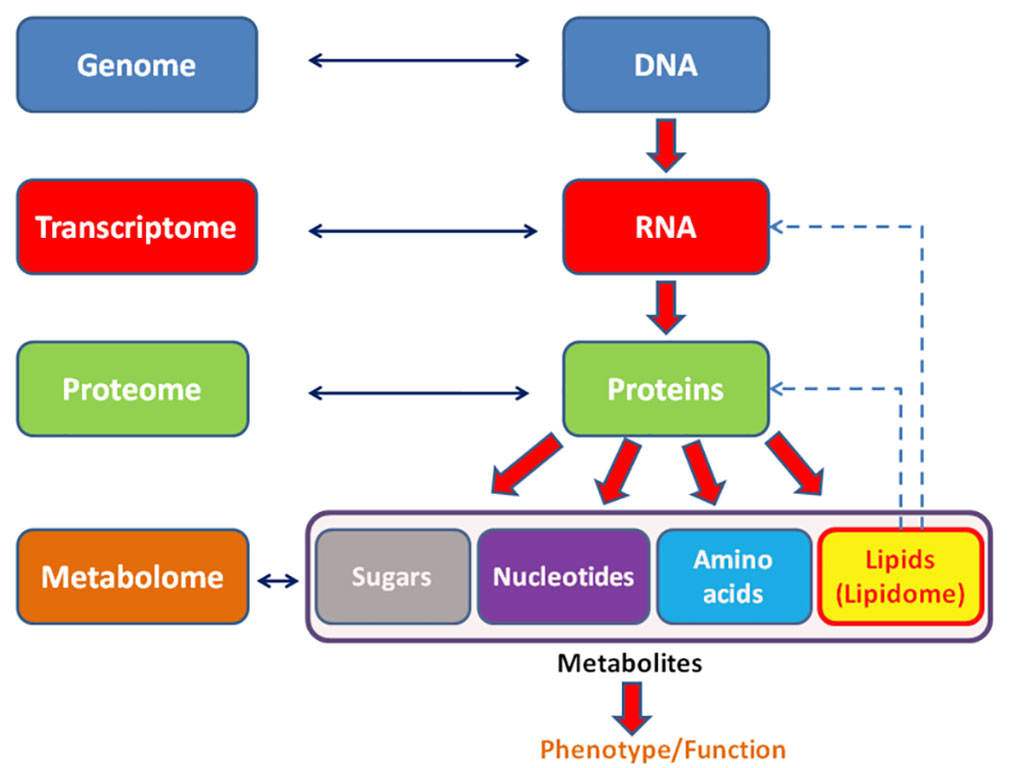Metabolomic Analytical Approach Identifies Multiple Neonatal Errors of Metabolism Disorders
By LabMedica International staff writers
Posted on 19 Jul 2021
A recent paper demonstrated that an untargeted metabolomics analytical approach could identify many more neonatal disorders caused by inborn errors of metabolism (IEM) than could be found by traditional methods.Posted on 19 Jul 2021
With expanded newborn screening becoming increasingly available, a broader approach to primary screening for IEMs is needed. In this regard, investigators at Baylor College of Medicine (Houston, TX, USA) examined whether untargeted metabolomic profiling could significantly increase the diagnostic rate of screening for IEMs compared with the traditional metabolic screening approach. Thus, the traditional trio testing of plasma amino acids, plasma acylcarnitine profiling, and urine organic acids was contrasted with advanced liquid chromatography–coupled mass spectrometry analysis of metabolites.

Image: General schema showing the relationships of the genome, transcriptome, proteome, and metabolome (the domain of clinical metabolomics) (Photo courtesy of Wikimedia Commons)
The clinical metabolomics approach is capable of detecting multiple metabolites with varying chemical properties in a single test for the global analysis of perturbations in biochemical pathways that would otherwise require multiple targeted tests. Using this approach, small molecules ranging from 75-1000 Daltons were extracted from plasma derived from an EDTA whole blood sample using an 80% methanol solution containing four extraction efficiency standards. The clarified supernatant solution was analyzed by one of two different liquid chromatography–coupled mass spectrometry configurations, depending on the date the sample was received in the laboratory.
For this study, data was generated from 4464 clinical samples received from 1483 unrelated families that had been referred for trio testing of plasma amino acids, plasma acylcarnitine profiling, and urine organic acids and from 2000 consecutive plasma samples from 1807 unrelated families received for clinical metabolomic screening.
Results revealed that of 1483 cases screened by the traditional approach, 912 patients (61.5%) were male and 1465 (98.8%) were pediatric. A total of 19 families were identified with IEMs, resulting in a 1.3% diagnostic rate. A total of 14 IEMs were detected, including three conditions not included in the Recommended Uniform Screening Panel for NBS (newborn screening). Of the 1807 unrelated families undergoing plasma metabolomic profiling, 1059 patients (58.6%) were male, and 1665 (92.1%) were pediatric. Screening identified 128 unique cases with IEMs, giving an overall diagnostic rate of 7.1%. In total, 70 different metabolic conditions were identified, including 49 conditions not presently included on the Recommended Uniform Screening Panel for NBS.
Overall, clinical metabolomics supported diagnosis in 7.1% of cases, providing an approximately six-fold higher diagnostic rate in screening for IEMs and identifying more disorders and more disease types compared with the traditional screening approach.
"Currently, newborn screening is conducted in every infant born in the U.S. to check for serious but rare health conditions at birth. Screening includes blood, hearing, and heart tests," said senior author Dr. Sarah Elsea, professor of molecular and human genetics at Baylor College of Medicine. "While newborn screening in general has improved in the last 10 years, clinically screening for inborn errors of metabolism has not changed substantially in the last 40 to 50 years."
"We developed a clinical test - untargeted metabolomics profiling - that looks at a broader range of metabolic compounds in the blood, therefore screening for many more disorders than the currently used approach," said Dr. Elsea. "In the current study, we compared the standard approach and untargeted metabolomics on their effectiveness identifying metabolic conditions. We are finding individuals with milder forms of a disease are more common in our populations than those with severe forms. Our approach has been quite successful identifying seizure disorders, movement disorders, and autism spectrum disorders. Our analyses have taught us to open our minds to a much greater spectrum of disease, allowing us to improve early diagnosis."
The clinical metabolomics approach for diagnosis of IEMs was published in the July 12, 2021, online edition of the journal JAMA Network Open.
Related Links:
Baylor College of Medicine













